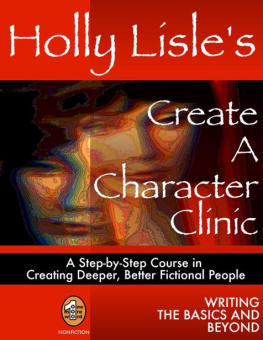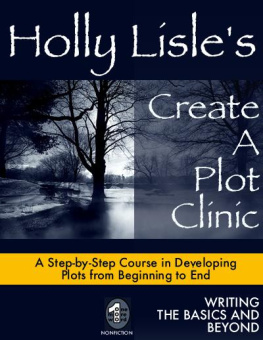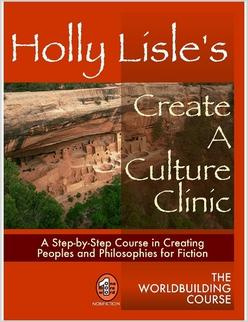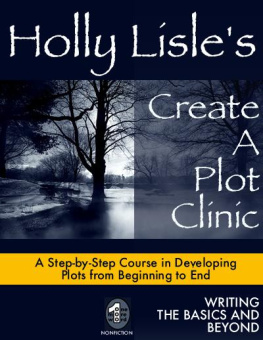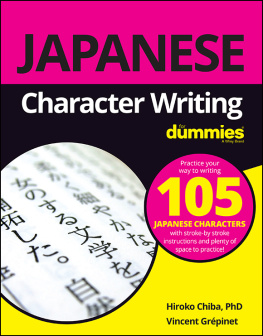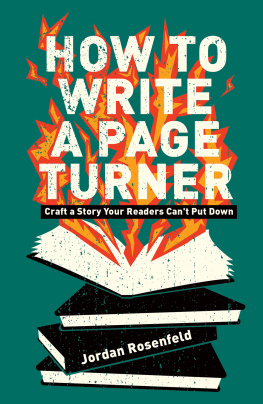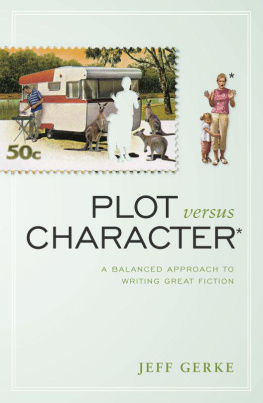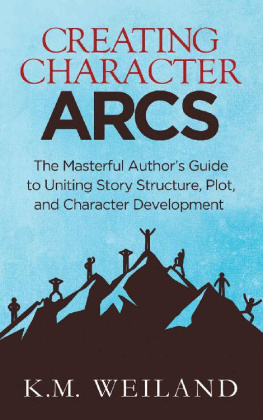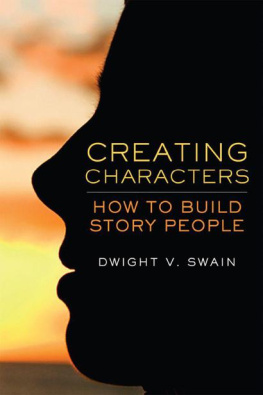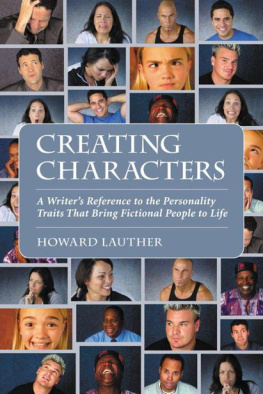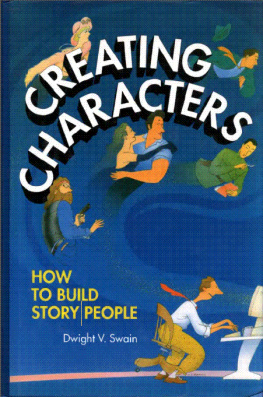


Introduction
My objective in writing this book is simple. I want to show you, not just how to develop a character, but how to write your characters in a compelling fashion once you come up with them. There are all sorts of books that will tell you how to put together interesting characteristics, with character backstory, with powerful motivations, and all the other things well-written characters need.
I have yet to find one, however, that takes the characteristics you've come up with and shows you how to apply them in such a way that your character lives and breathes on the page.
That's what I intend to do.
I want to make this process simple and to break it down into steps and techniques you can start following immediately. I'll show you what I do, and then take you through doing it yourself.
And I want to keep it shortyou shouldn't have to wade through tons of words to find the few kernels of useful knowledge that you can start applying to your own work.
So that you can start using it right away, this book is divided into three sections.
Section One is Ask Them Anything Explanations and demonstrations of seven critical areas of character development, along with printable charts offering questions that will give you a well-rounded framework for your characters. Answer as few or as many questions as you need to get a feel for the people you'll be writing about, and ask (and answer) more as you work through your story and need new twists and turns.
Section Two is Bring Them To Life A tutorial on how to put all the information you've developed into creating people who live on the page.
Section Three is The Sins of Characterization (And How to Commit Them Right) Believe it or not, almost everything you can ever do wrong in putting characters on the page, you can also do right. This section shows you when a sin can be a virtue, and vice-versa.
All three sections include demonstrations of both unpublishable and publishable approaches to techniques and problems, and exercises that allow you to put what you've learned into practice.
I want to make this as close as I can to me reading over your shoulder, looking at what you've done, and saying, "Okay. Here's what you can try next to get that scene to work."
With that in mind, I recommend you work through this book from front to back. Answer some Section One questions, even if only a few; do a handful of Section Two exercises just to learn how to extract interesting story from your Q&A; and then get into the sins and virtues and begin to practice them.
Mine aren't the only techniques out therein fact, I don't know of anyone else who works the way I do, and you will find that a lot of advice elsewhere that contradicts mine. That's okaynot every technique will work for every writer. Pick out what helps you, and feel free to discard the rest.
Good luck with your writing. I hope I can help you realize your dreams.
A Brief Note on Gender Conventions
While I can assume that the readers of this book are human, and therefore most likely either male or female, I cannot begin to assume the same thing about the characters you hope to create.
And since I can think of few things more tedious to write (or read) than endless iterations of he/she/it put on the page in the hopes of being inclusive/inoffensive/politically correct, I'm going to fall back on old convention.
In this book, I'm me. You're you. The character in general will be he. His friends will be he, his enemies will be he, and his lovers will be she. I'll demo exercises with a female character. This setup does not encompass any sort of real-world diversity, nor is it intended to. You will use this info to write the characters you choose to write, and they will be exactly as diverse as you care to make them.
Meanwhile, I will not end up with a headache from writing sentences that read "You'll find your character's essential him-ness/her-ness/it-ness in his/her/its actions and relationships, and in his/her/its hobbies, challenges, friends and enemies." I won't commit a crime of a sentence like that, much less a whole book full of them, and I hope you'll forgive me for not doing so.
SECTION ONE: Ask Them Anything
Character & What It Isn't
My first characterat least the first one I actually remember writing with an eye toward selling the story he was inwas Draegan Dankmire. Feel free to snicker. I do.
I remember two things about poor Draegan, and the other thing was the fact that he had a hat like those worn by the Three Musketeers. Except it was purple.
Draegan was supposed to be a serious character in a serious fantasy novel. He was planned as the hero. He made it thirty pages, more or less, before he turned into a puddle of mush in the middle of the page and I realized the story wasn't going to work.
Now, not everything about that first failed novel effort was a total loss. The world that Draegan Dankmire inhabited showed up in Hunting the Corrigan's Blood, as Cadence Drake's home world. It was, if I say so myself, a damned cool world. But Draegan never made it to the land of publishedor even finishedfiction, because a character cannot make it through the world with nothing going for him but an unfortunate name and a pimp hat.
He needs to have character.
Here are all the things that character isn't. It isn't a catch phrase said at stressful moments in the story. It isn't an interesting scar, or a habit of twisting hair around a finger, or a propensity to dress in yellow.
Character in your fictional character is precisely the same thing that it is in you. It's who you are when no one is looking, and who you are when someone is looking, and how those two people are different, and why.
Do you need to have a story already in mind to use this book? No. If you do, you can use the techniques and points given here to strengthen your work. If you don't, the act of creating characters will spawn more stories than you could write in a lifetime.
With that in mind, then, onward.
What Character Is, and How to Get Some
People start out untried, untested, and essentially unformed. When we're small, we have basic needs. Feed us, love us, and keep us safe, and we're happy.
Character does not form in the moments when we're happy. Character forms when things start to go wrong.
Character is how we deal with hardship, how we react when challenged, how we think when tempted, how we flee when hunted, how we pursue when hunting. It is how we want what we want, and what we are willing to do to get it.
All of us have moments in our pasts when we failed a challenge, when our choices reflected poorly on our characters. All of us have moments when we prevailed against a temptation, and came away looking good, and feeling good about ourselves, and deservedly so.
Every fictional character should have those same moments; places where he was weak or dishonest, places where he was strong and did the right thing in spite of personal cost or the temptation of personal gain. Andhere's the tricky partboth your good guys and your bad guys have to have these same moments. We can safely assume that your villains (or antagonists) have made more wrong choices than right ones, have acted out of self interest far more often than altruism. Odds are good that your heroes (or protagonists) will have done the opposite.

